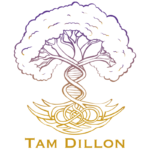The concept of “flow” describes a state where one is fully immersed in an activity, experiencing deep focus and enjoyment. Coined by psychologist Mihaly Csikszentmihalyi, flow is often referred to as being “in the zone.” This state occurs when there is a balance between the challenge of a task and the skill level required to meet that challenge. When in flow, time seems to disappear, distractions fade away, and there is a seamless connection between thought and action. This state of mind is not only deeply satisfying but also highly productive, making it an essential tool for personal development and growth.
Flow states happen when we engage in tasks that are both meaningful and challenging, without being overwhelming. Consider an athlete performing at their peak during a game, an artist lost in the process of creating, or even the simple act of writing where hours pass unnoticed because you’re so absorbed in the work. In these moments, the mind and body are in perfect harmony, fully focused on the task at hand. This can lead to breakthroughs in creativity, performance, and personal achievement.
One key aspect of flow is that it helps us transcend the usual chatter of the mind. When we’re in a flow state, thoughts of worry, doubt, and self-consciousness fade, allowing us to act freely and with confidence. This can be a deeply empowering experience, helping us connect more deeply with our abilities and passions. People often report feeling a heightened sense of clarity and fulfillment when in flow, as they’re completely absorbed in what they are doing without distraction.
From a psychological perspective, flow is closely tied to well-being. Regularly entering a flow state has been shown to increase happiness and life satisfaction. This is because it allows us to engage fully with life’s challenges, pushing our boundaries while giving a sense of achievement and purpose. When in flow, the brain releases dopamine, a neurotransmitter associated with pleasure and reward, which reinforces positive feelings and motivates us to continue engaging in similar activities.
To cultivate more flow in your life, it’s important to identify activities that challenge you just enough to engage your full attention but not so much that they cause anxiety. These tasks should stretch your abilities but shouldn’t overwhelm you. For example, if you’re a painter, working on a piece that pushes your technical skills slightly beyond your comfort zone can help you tap into flow. Similarly, in a professional context, tackling projects that require problem-solving or creativity can lead to flow when they match your skill level and allow you to focus without constant interruptions.
Another crucial aspect of flow is setting clear goals. Having a specific outcome in mind helps direct your focus and eliminates distractions. Whether it’s completing a task, reaching a performance goal, or learning a new skill, clear objectives provide the framework necessary for flow. For instance, a musician may enter a flow state while composing or playing a piece of music, as their focus is fully on creating or interpreting the music without worrying about external factors.
Creating an environment conducive to flow is also essential. Minimize distractions, find a comfortable and quiet space, and organize your time to allow for uninterrupted focus. Flow often requires longer periods of concentration, so it’s helpful to set aside a block of time where you can work on a specific task without the need to multitask. Turning off notifications, reducing background noise, and setting a clear time frame for your work can all contribute to an environment where flow can emerge.
Practices such as mindfulness and meditation can also support your ability to access flow. Mindfulness helps train the brain to stay focused on the present moment, which is a crucial component of flow. When you can direct your attention fully to the task at hand without being pulled into distractions, it becomes easier to enter and maintain a flow state. Meditation, particularly mindfulness meditation, can help improve this skill by training your brain to focus and observe thoughts without attachment, making it easier to stay in the flow when you’re working.
Flow isn’t just about productivity; it’s also about personal growth. When we enter a flow state, we tap into our highest potential, engaging fully with our passions and talents. Over time, regularly experiencing flow can build confidence, improve skills, and foster a greater sense of mastery. This mastery, in turn, contributes to a sense of accomplishment, fueling the desire to continue pushing boundaries and growing.
While achieving flow might not always be easy, particularly in the hustle of modern life, the rewards are well worth the effort. By seeking out activities that challenge and engage you, creating a supportive environment, and practicing mindfulness, you can cultivate more opportunities for flow in your daily life. This, in turn, can lead to greater personal satisfaction, enhanced creativity, and a deeper sense of fulfillment.
Incorporating flow into your life is not just about achieving success in external goals; it’s about becoming more present, more engaged, and more aligned with your true potential. Whether you find flow in artistic expression, work, or even physical activities like yoga or sports, the experience of being fully absorbed in the moment allows for profound personal transformation.



